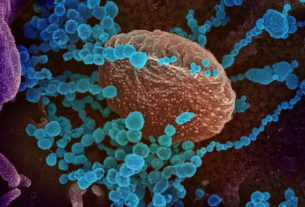|
Getting your Trinity Audio player ready...
|
Cambridge, MA — August 20, 2025
Researchers at the Massachusetts Institute of Technology (MIT) have developed two promising new antibiotics using generative artificial intelligence (AI), offering fresh hope in the global fight against antimicrobial resistance. The compounds—designed to combat drug-resistant strains of gonorrhoea and methicillin-resistant Staphylococcus aureus (MRSA)—represent a breakthrough in AI-driven drug discovery.
🔍 A New Approach to Antibiotic Design
The MIT team employed generative AI algorithms to explore vast chemical spaces, designing more than 36 million theoretical compounds. Unlike traditional methods that rely on modifying existing antibiotics, the researchers aimed to create entirely new molecular structures with novel mechanisms of action.
Two distinct AI strategies were used:
- Fragment-based design: Starting with known chemical fragments, the AI generated millions of variations using genetic algorithms and variational autoencoders.
- Free-form generation: The AI was given full creative freedom to design molecules from scratch, guided only by basic chemical rules and safety filters.
After computational screening and laboratory synthesis, 24 compounds were tested, with seven showing selective antibacterial activity. Two candidates emerged as particularly effective:
| Compound | Target Pathogen | Mechanism of Action | Model Used |
|---|---|---|---|
| NG1 | Neisseria gonorrhoeae | Disrupts bacterial membrane via LptA inhibition | Vaginal infection model in mice |
| DN1 | MRSA (Staphylococcus aureus) | Novel membrane disruption | Skin infection model in mice |
🌍 Addressing a Global Health Crisis
Antibiotic resistance is a growing global threat, contributing to nearly five million deaths annually. Gonorrhoea and MRSA are among the most stubborn pathogens, with rising resistance to existing treatments. The World Health Organization has warned that without new antibiotics, routine infections and surgeries could become life-threatening.
Lead researcher Professor James Collins described the project as a potential turning point:
“AI can enable us to come up with molecules cheaply and quickly, expanding our arsenal and giving us a leg up in the battle against superbugs.”
Postdoctoral researcher Aarti Krishnan added:
“We deliberately avoided anything resembling current antibiotics to tackle resistance in a fundamentally different way.”
🧪 Promising Results, Long Road Ahead
While NG1 and DN1 demonstrated efficacy in preclinical models, both compounds require further refinement and safety testing before entering human trials. Experts caution that the path to clinical approval is long and expensive, with no guarantee of success.
Dr. Andrew Edwards of Imperial College London called the work “very significant,” noting its potential to reshape antibiotic development. However, he emphasized the need for rigorous testing to ensure safety and effectiveness.
💡 Broader Implications
The success of MIT’s AI-driven approach could usher in a “second golden age” of antibiotic discovery. By enabling researchers to explore previously inaccessible chemical spaces, AI may accelerate the development of treatments for other resistant pathogens.
The team plans to apply its methodology to additional bacterial targets and collaborate with non-profit organizations to advance the compounds toward clinical readiness.



